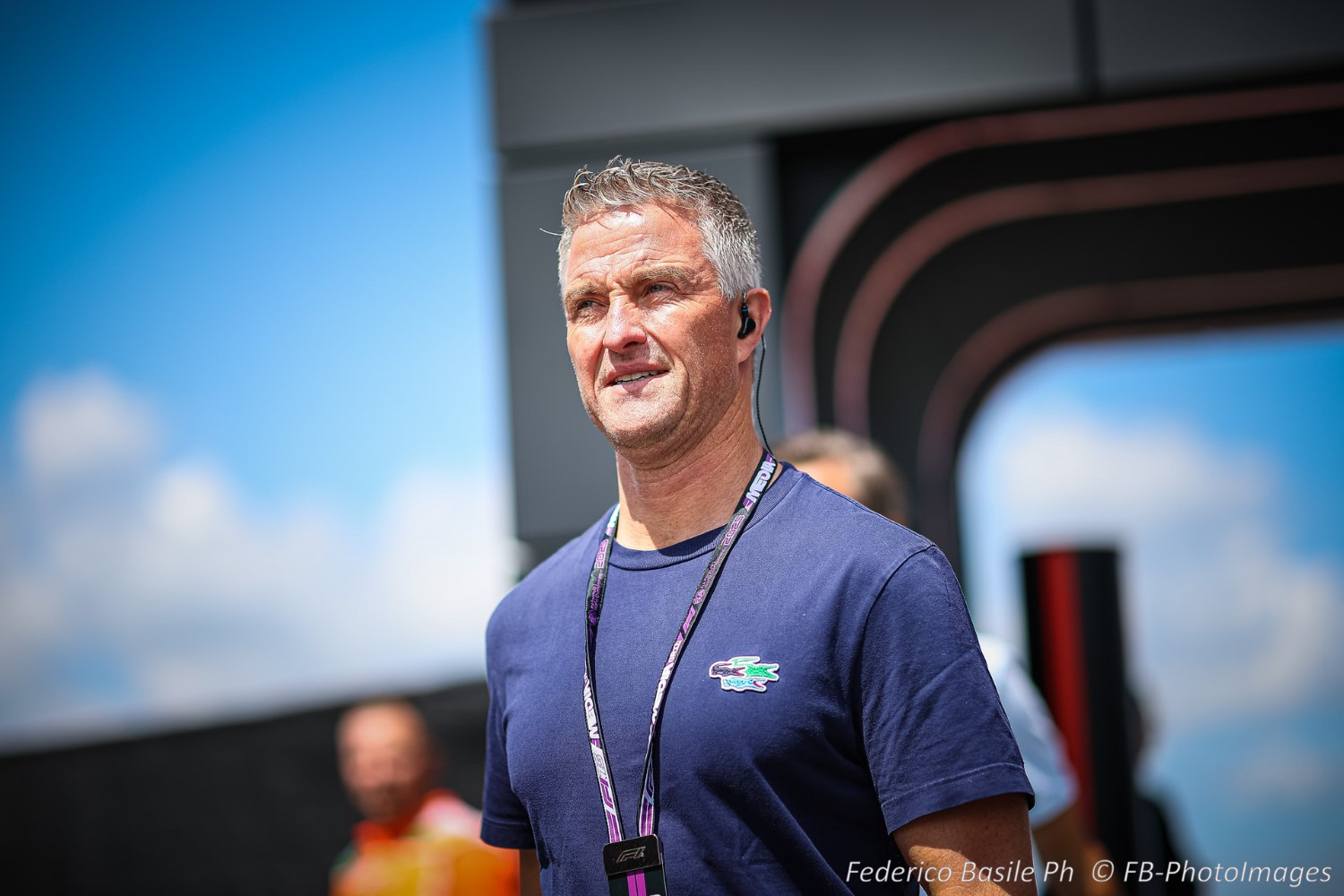F1 News: Schumacher thinks Cadillac and Haas teams should form an alliance
On a warm summer morning in August 2025, Ralf Schumacher (pictured) sat at home in Germany, sipping a strong espresso as he scrolled through the latest Formula 1 news. The sport he once raced in with passion was evolving, and the buzz around the grid’s expansion with Cadillac’s entry in 2026 had caught his attention.
Read on as we take you through our interpretation of just what Ralf Schumacher is thinking regarding the formation of a strong American F1 team.
–by Mark Cipolloni–
As a six-time Grand Prix winner and uncle to the tenacious Mick Schumacher, Ralf had a keen eye for the strategic shifts shaping the future of F1. His thoughts turned to the Haas F1 Team and the ambitious new American outfit, Cadillac, and a bold vision began to take shape.
Ralf leaned back in his chair, his mind drifting to the challenges facing Haas. The American team, founded by Gene Haas in 2016, had carved out a niche as a scrappy midfield contender, relying on partnerships with Ferrari and Dallara to stay afloat.
Yet, despite a decade on the grid and a newfound financial stability thanks to the budget cap, Haas showed no real ambition to climb higher. Ralf knew Gene Haas had turned down multiple offers to sell the team in the past 18 months, a sign of commitment, but he wondered if the team’s current trajectory would keep it perpetually stuck in the midfield. “They’ve got the bones of a solid outfit,” Ralf likely thought to himself, “but they need a spark.”
His thoughts then shifted to Cadillac, the General Motors-backed newcomer set to join F1 in 2026 with Ferrari engines before developing its own power unit by 2029. The team’s early stages were promising yet daunting—only 400 people to build an entire operation from scratch.
Ralf admired the ambition but saw the risks. “They’re starting with nothing,” he thought, recalling his own racing days when new teams often stumbled due to lack of infrastructure. Drivers like Mick, Valtteri Bottas, and Sergio Perez were being linked to Cadillac, but Ralf knew the real challenge wasn’t the cockpit—it was the team behind it.
A radical idea struck him. What if Haas and Cadillac joined forces in a way that mirrored the Red Bull-Racing Bulls model? Ralf envisioned Haas transforming into a junior team for Cadillac, leveraging its established presence to support the newcomer’s growth. He imagined Gene Haas retaining ownership, avoiding a full sale, while Cadillac provided technical and financial backing. “Not necessarily a sale,” Ralf mused, “but a partnership—a junior team setup could be the solution.” This alliance could solve multiple problems: Haas would gain a clear direction and resources to develop, while Cadillac could hit the ground running with an existing team’s infrastructure.
Ralf saw this as a win for both sides. Haas, with its 10 years of grid experience, could offer Cadillac a platform to learn the sport’s intricacies, from pit stop efficiency to race strategy. In return, Cadillac’s backing could elevate Haas beyond its current limitations, potentially allowing it to nurture young drivers—a rarity in today’s risk-averse F1 landscape. “All teams struggle to bring in rookies these days,” Ralf noted, thinking of Mick’s own bumpy journey. A junior team structure could create a pipeline, giving talents like Jak Crawford or Felipe Drugovich a chance to prove themselves.
He pictured the scenario unfolding. In 2026, Cadillac would debut with its Ferrari-powered car, while Haas, as its junior partner, would run a similar setup, sharing data and development insights. Over time, as Cadillac built its own power unit by 2029, Haas could transition to support that technology, strengthening the American presence in F1. Ralf smiled at the thought of this “US superteam” concept, a bold move that could rival the dominance of European manufacturers.
But Ralf Schumacher wasn’t naive. He knew Cadillac faced a Herculean task. “The drivers are the least of their problems,” he said aloud, imagining the chaos of assembling a competitive team with just 400 staff. He wondered if they’d rise like a phoenix or struggle to get off the ground. For Haas, the partnership could be a lifeline, but only if Gene Haas embraced the idea and Ayao Komatsu, the team principal, could align the squad’s culture with Cadillac’s vision.
As the afternoon sun dipped lower, Ralf jotted down his thoughts, planning to share them with Bild and other media outlets. He saw this as more than a strategy—it was a story of redemption and innovation. For Haas, it was a chance to redefine its legacy; for Cadillac, a shortcut to credibility; and for young drivers like Mick, a potential pathway back to the grid. Ralf leaned back, satisfied, knowing his idea could reshape the American footprint in Formula 1, one bold step at a time.
